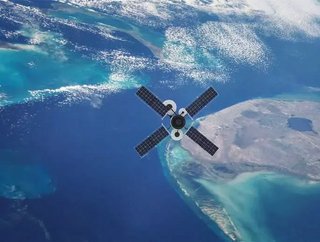Chandrayaan 2: one small step towards mining the moon?

Right now, 238,855 miles away (provided it’s nighttime and give or take the distance from London to Anchorage, Alaska, which is spookily similar to the diameter of the Earth) the Indian Space Research Organisation’s (ISRO) craft, the Chandrayaan-2, is moving in orbit around the moon. Currently, it is passing over the lunar poles at a distance of about 62 miles, or the distance between Central London and Milton Keynes if you stay off the M1. If the craft lands - which it is scheduled to do on 7 September, it will make India the fourth country to successfully perform a soft landing on the moon.
But, beyond exploration and national pride, what could India have to gain from landing on the Moon? Quite a lot, as it turns out.
Commercial space activity was reportedly worth a total of $350bn in 2018. By 2026, that figure is projected to grow to more than $558bn, and by 2040, the market might reach as high as $1trn. As the technology behind hardware launch and recovery, nano satellites and ever expanding communications networks accelerates, companies and governments capable of shooting things into space for money are going to be tapping into a massive growth market.
When President Kennedy publicly announced that the United States would land a man on the moon by the end of the decade, he kickstarted a period of aerospace funding that saw NASA receive more than 4% of the annual federal budget, an astronomical amount of money.
The Satellite economy is already attracting more and more investors to the market, with firms like SpaceX already established as private sector alternatives, and public agencies like NASA hitching rides on Elon Musk’s Falcon Heavy Rockets, the world’s governments need to find intelligent ways to remain in space, in addition to pioneering legislative and regulatory approaches. Given that NASA now receives less than 0.5% of the federal budget, this is no mean feat.
SEE ALSO:
-
NASA teams up with SpaceX, Blue Origin and 11 other companies for trailblazing space technologies
-
Rocket Lab plans to increase satellite launch frequency with reusable Electron rocket
While the next decade of space based industry will likely revolve around satellite manufacturing and transportation, the next growth area of space industry is expected to be “in-situ resource utilisation”: the harvesting of materials from space in order to power equipment. By harvesting resources from space, companies can keep vehicles outside the Earth’s atmosphere permanently, removing the need for expensive, resource inefficient and costly launches and dangerous re-entries.
Check out three organizations looking to kickstart the new space-based economy.
The ISRO has no plans to rest on its laurels, should the Chandrayaan 2 go off without a hitch. The organisations has one of the most crowded to do lists of any spacefaring company or agency in the world, with plans to carry out an ambitious 36 launches in the next two years. Following its Moon mission, Chandrayaan 2 is going to be heading for the Sun’s corona later by 2020.
“Life on Earth in the future will not be sustainable without satellite-based space infrastructure. Communications, agriculture, transportation, finance, environmental sustainability, as well as a variety of industries will all depend on this extraterrestrial infrastructure,” or so says iSpace, a Japanese robotics company looking to explore the possibility of lunar water to support a moon-based economy.
The Asteroid Mining Corporation
The first company of its kind in the UK (as the name might suggest), the Asteroid Mining Corporation was founded in 2016 by space mining enthusiast Mitch Hunter-Scullion. Scullion believes that mining near-Earth celestial bodies for minerals and resources could both be a lucrative opportunity and also may be the key to humanity escaping the resource limitations of our planet. A report released this week claimed that the asteroid mining market could to register a CAGR of more than 20% during the forecast period of 2019 to 2038.






